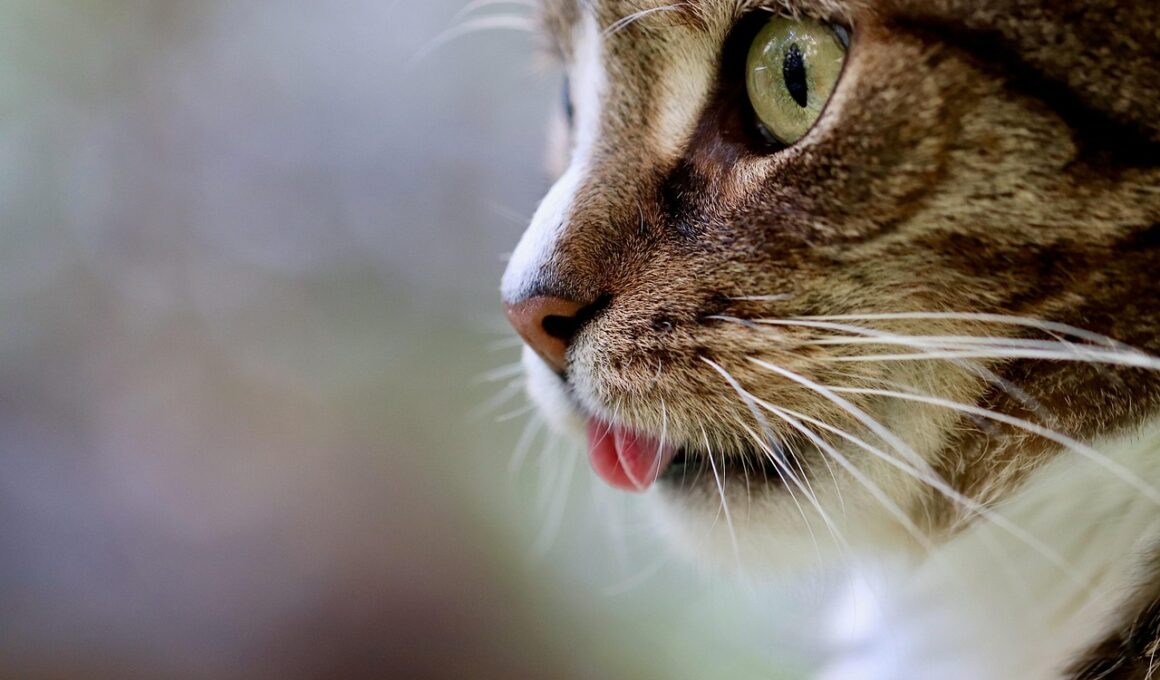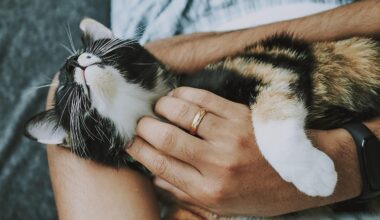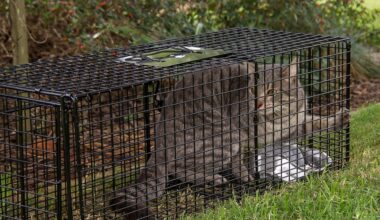How to Avoid Common Mistakes When Choosing a Show Cat
Selecting the right cat for shows requires careful consideration to avoid common mistakes. Firstly, potential cat show enthusiasts must research breeds thoroughly. Each breed has unique traits, and understanding them is vital in making the right decision. Attend local cat shows to see various breeds and ask experienced exhibitors about their experiences. Moreover, check reputable breeders and observe their ethical practices. The temperament of the cat is crucial; a well-mannered and sociable cat will thrive in the competitive environment of shows. Make a list of traits desirable in show cats, such as grooming, health, and personality. Additionally, ensure that you find a kitty not only beautiful but also shows potential for performance. Health screenings are essential to ensure the cat is free from genetic issues. Finally, consider your lifestyle. A breed that matches your daily routine is more likely to succeed. Finding a good match between kitten temperament and your home atmosphere can significantly enhance your experience. Overall, visiting shows and connecting with breeders provides valuable insights that can guide you in making an informed decision and help you avoid common pitfalls in choosing a show cat.
When choosing a show cat, evaluating physical characteristics is key. Most judges look for breed standards, and every breed has specific attributes like body structure, coat quality, and color patterns. Familiarize yourself with the breed standard by consulting resources such as the CFA (Cat Fanciers’ Association) or TICA (The International Cat Association). Additionally, consider how well the cat adheres to these standards when assessing potential show cats. For example, a Persians’ coat should be thick and long, while Siamese cats should exhibit striking color points. When visiting breeders or cat shows, observe each cat’s grooming and overall physical health. A cat that has impeccable grooming is likely to perform better in competitions. Don’t forget to pay attention to the cat’s movement and gracefulness, as judges often evaluate how a cat moves during the show. Furthermore, if you’re new to shows, consider reaching out to experienced exhibitors for guidance on selecting an ideal physical candidate. This knowledge will not only enhance your understanding but also help in making informed choices when selecting a potential show cat that meets competitive standards and possesses the desired characteristics.
Assessing Temperament and Personality
Beyond appearance, the temperament and personality play an enormous role in choosing the right show cat. Some breeds are more outgoing, while others may be shy. Understanding these differences is essential to select a cat that can handle the hustle and bustle of shows. Socialization starts early in a kitten’s life, making it essential to adopt a pet from a breeder who prioritizes socialization. Kittens that enjoy human interaction and exhibit curiosity are generally more likely to be comfortable around judges and spectators. Additionally, observing how the cat interacts with other animals can provide insight into its temperament. A well-adjusted cat is likely to showcase more confidence in stressful environments. Be cautious of overly aggressive or frightened cats, as they may not perform well. When visiting potential show cats, spend time holding and playing with them to gauge their reactions. This will not only reveal their natural behavior but also help you form a bond with them. In conclusion, understanding a cat’s temperament is essential in choosing the right show cat; a friendly and adaptable feline will perform better in competitive settings and make the process more enjoyable.
Ensuring a good health background is another essential step in finding the right show cat. Cats with a history of health problems can lead to significant challenges later on, particularly in a show environment that demands physical fitness. Ask breeders for health clearances and perform research on breed-specific health issues. Reputable breeders often screen their breeding cats for genetic problems that might affect their kittens. Common health issues may include heart disease, hip dysplasia, or respiratory issues, depending on the breed. Prospective cat owners should schedule a veterinary examination soon after acquiring a cat for a wellness check. This proactive approach ensures that your cat is healthy enough for the pressure of competition. In addition, consider investing in pet insurance to mitigate potential veterinary costs associated with unforeseen health conditions. Understanding the cat’s medical history is invaluable and helps you anticipate potential issues while providing adequate care. By prioritizing health, you ensure both your future show cat’s success and their wellbeing for years to come. A focus on health education can enhance your experience and competence in show dynamics.
Training Your Show Cat
The training process for show cats requires patience and dedication to prepare for competitions effectively. Start training young, as kittens adapt more easily to new routines and commands. Begin with basic commands like sit, stay, and come to establish a strong foundation for more advanced training. It’s crucial to ensure training sessions are enjoyable and engaging to keep your cat motivated. Use positive reinforcement techniques such as treats and praise to reward good behavior. Consistency is vital; make a training schedule that fits both you and your cat for steady and effective progress. Practice handling exercises, which will involve getting your cat used to being touched, groomed, and examined. This exposure will make your cat comfortable during shows when judges will scrutinize. Additionally, gradual acclimation to various environments will help your cat adjust to the noise and crowd present during shows. Lastly, attending workshops or clubs dedicated to show cats can provide invaluable skills and knowledge. Watching experienced handlers train their cats can inspire new techniques and strategies for your training routine, helping you both shine when it’s time to hit the stage.
Connect and engage with the cat show community to enhance your experience and knowledge. Join local breeder clubs or online forums focused on specific cat breeds, as they often share insights and tips on preparing for shows. Circle back to the shows you attended, and reach out to seasoned competitors for advice on what works and what doesn’t in show preparation. Networking with established exhibitors can open doors to mentorship and a wealth of shared experiences that can shape your approach. Furthermore, consider attending workshops and seminars that focus on show cat grooming, health, and temperament training. Many breed organizations host events that provide opportunities to learn from experts. Engaging with the community can not only help improve your preparations for shows but also create a support network that can alleviate the stress of competition. Moreover, building relationships within the community can lead to potential collaborations or partnerships. Overall, becoming part of the cat show world makes the experience far more enjoyable and enriching for both you and your show cat.
Final Considerations
Finally, when choosing a show cat, one must remember the commitment involved. Cats require time, attention, and investment to thrive in competitive environments. From grooming and training to health monitoring, the responsibilities are significant and should not be taken lightly. Ensure that you assess your personal and financial circumstances before committing. Owning a show cat can be a rewarding experience, but it also presents challenges and obligations. Prepare for the emotional and financial investments required to give your show cat the best opportunity in competitions. Consider planning for additional expenses such as entry fees for shows, grooming supplies, and regular veterinary care. Caring for a cat to the show standard means regular grooming sessions and ongoing training, which can take considerable time. Additionally, factors such as travel arrangements and cat nutrition must also be taken into account. Therefore, evaluate your current lifestyle, support system, and resources, ensuring they align with the needs of raising a show cat. Making informed decisions contributes significantly to the joy of this endeavor, ensuring both owner and cat thrive in their shared journey of showcasing feline talent.
In conclusion, selecting the right show cat is an undertaking filled with crucial decisions and considerations. Avoiding common pitfalls starts with understanding breed characteristics and temperament, which aids in making an informed choice. Researching health issues associated with specific breeds can help identify potential risks in your cat’s background. Moreover, engaging with the cat show community opens doors to support networks, educational events, and mentorship opportunities that enhance your experience. Proper training and preparation play significant roles in determining your cat’s success and performance during competitions. Always remember the responsibilities that come with owning a show cat. Being prepared for the time, financial, and emotional investments necessary will lead to a fulfilling journey. Consider each factor together to ensure that both owner and cat experience excitement throughout the show process. Lastly, cherish the moments spent bonding with your cat through training, grooming, and show experiences. The journey of showcasing a beloved pet can be truly rewarding when approached with knowledge, care, and enthusiasm. I wish you the best success in your journey toward selecting the ideal show cat and embarking on a memorable adventure in the captivating world of cat shows.


